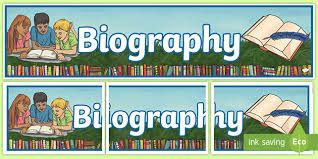Every family has a story worth telling. From grand adventures and heartfelt struggles to quiet moments and everyday joys, your family’s journey is a legacy that deserves to be remembered. A family biography is more than just a book—it’s a timeless record of who you are, where you came from, and the people who shaped your life.
In this article, we’ll explore what a family biography is, why it matters, and how you can create one that generations will treasure.
What is a Family Biography?
A family biography is a written account of your family’s history, often including:
- Birth and death records
- Family trees
- Major life events (marriages, achievements, hardships)
- Personal stories, traditions, and anecdotes
Unlike a dry list of dates, a family biography brings people to life through their personalities, voices, and memories.
Why You Should Write a Family Biography
1. Preserve Memories Before They’re Lost
Time has a way of erasing details. A family biography helps preserve:
- Your grandparents’ life stories
- Your parents’ childhoods
- Your own milestones and lessons
By writing them down now, you ensure they won’t be forgotten.
2. Strengthen Family Identity
When family members read about their roots, they feel more connected to one another. Knowing the struggles and triumphs of your ancestors builds a deeper understanding and pride in your heritage.
3. Teach Future Generations
A family biography becomes a teaching tool. It can:
- Show children where they come from
- Pass on values, culture, and traditions
- Provide context for who they are today
How to Start Writing Your Family Biography
Writing a family biography might sound overwhelming, but you can begin with small, simple steps.
Step 1: Gather Information
Start collecting stories, documents, and photos. Talk to relatives and ask:
- What do you remember about your childhood?
- What was your relationship with your parents like?
- What major events shaped your life?
You can record conversations, take notes, or even interview them on video.
Step 2: Create a Family Tree
Sketch a simple family tree to organize the generations. You can use free online tools like:
This helps visualize connections and timelines.
Step 3: Choose a Format
Your biography can take many forms:
- A printed book
- A digital PDF
- A blog or website
- A scrapbook with images and handwritten notes
Choose what feels right for your family.
Step 4: Write with Heart
Don’t worry about being a professional writer. Just be honest and write in your voice. Include:
- Funny moments
- Emotional experiences
- Quotes from family members
Let your family’s personality shine through.
Tips for a Great Family Biography
Keep It Personal
People want to read about emotions, challenges, and relationships—not just events. Include letters, journal entries, or personal reflections.
Use Photos and Artifacts
Add images of:
- Wedding photos
- Military records
- Old houses or family farms
- Handwritten recipes or notes
Visuals make the story come alive.
Involve the Whole Family
Ask each member to write a short chapter or contribute a memory. This builds a richer and more diverse narrative.
Edit and Organize
Once you’ve gathered the stories, organize them chronologically or by theme. Consider hiring a freelance editor if you want a polished finish.
Ideas for What to Include
Here are some sections to consider in your family biography:
| Section | Description |
|---|---|
| Introduction | Set the tone and purpose of the biography |
| Family Tree | A chart showing relationships |
| Early Generations | Stories about ancestors |
| Major Events | War service, migration, marriage, etc. |
| Traditions | Recipes, holidays, sayings |
| Lessons Learned | Values and life advice passed down |
| Funny or Touching Stories | Things that make your family unique |
Benefits of a Completed Family Biography
Once your biography is done, it becomes a priceless gift. You can:
- Print copies for every household
- Give it as a holiday or birthday gift
- Keep a digital version for easy sharing
It also becomes a living document—you can continue to update it as new stories unfold.
Common Mistakes to Avoid
- Waiting too long to start (elders may pass away)
- Only focusing on dates and facts—forgetting the feeling
- Writing too formally—this is a story, not a textbook
- Not backing up your digital files
Final Thoughts
A family biography is one of the most meaningful projects you can ever undertake. It honors those who came before you and creates a bridge for those who come after. Start small, involve your loved ones, and focus on heart over perfection.
Your family’s story deserves to be told—start writing it today.
